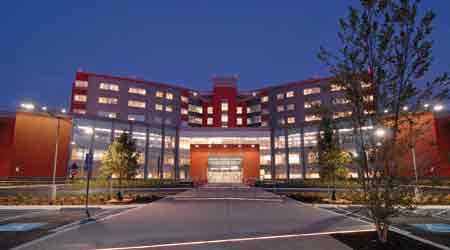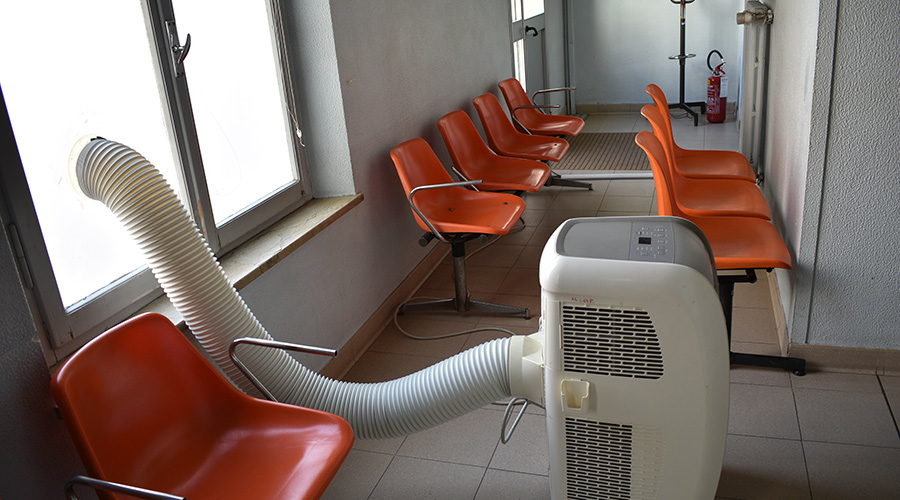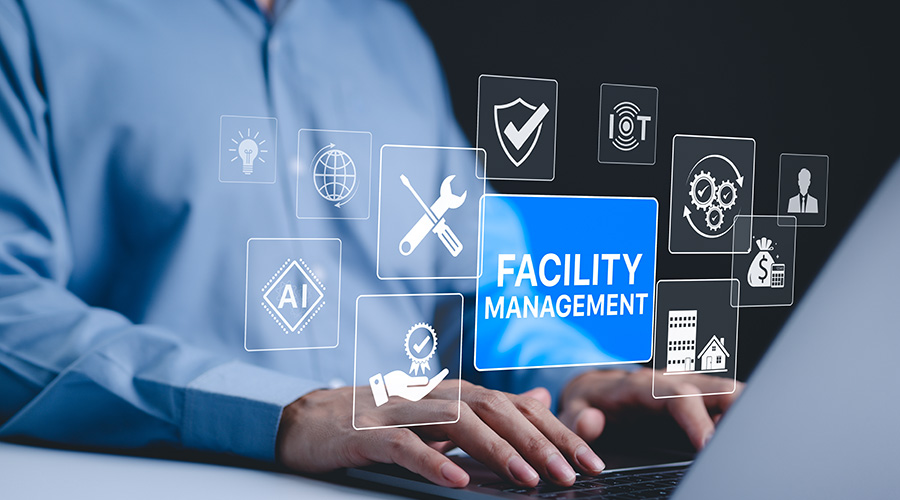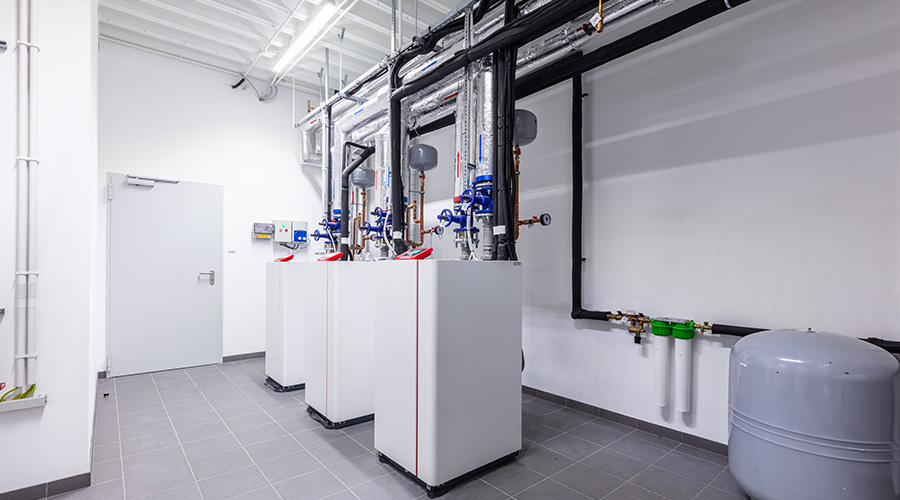 The LEED Silver 1.3-million-square-foot Fort Belvoir Community Hospital includes a smart BAS with 3,500 temperature control zones, 4,000 controllers, and more than 30,000 control points.Envise
The LEED Silver 1.3-million-square-foot Fort Belvoir Community Hospital includes a smart BAS with 3,500 temperature control zones, 4,000 controllers, and more than 30,000 control points.EnviseConvergence of Direct Digital Controls And Internet of Things Brings High-Performance HVAC
DDC controls are a foundational concept to IoT, but IoT is not a new concept for FMs; just a different way of thinking about communication, data, and analytics.
Convergence is a revolutionary development. In HVAC, joining independent technologies over multiple data communications networks with standards that allow for real-time data aggregation from a vast array of sensors has been a real game-changer for facility managers. Such collection of real-time data provides machines and people the ability to evaluate and manipulate the physical world, which is referred to as the Internet of Things (IoT). The foundations that enable this convergence have been forming for decades; and the commercial facilities industry served as one of the first industries to realize and embrace the foundational concepts of IoT in the form of HVAC direct digital controls (DDC) systems.
Initially, HVAC DDC systems were created with the sole purpose of meeting the needs of commercial facilities to effectively monitor and control HVAC environments. However, today the systems represent an opportunity for facility owners and operators to quickly realize the benefits of the disruptive growth and wide scale adoption of the IoT throughout society. Understanding the connection between the familiar concept of DDC and the new world of the Building IoT is crucial for facility managers interested in high-performance buildings.
IoT to facilities
The technological foundation of IoT is not new to the commercial facilities industry; rather many of IoT’s basic concepts were developed based on the needs of commercial facilities. For example, the use of an array of sensors in the physical environment to allow for evaluation and manipulation of HVAC systems dates to the invention of the first non-computer enabled building pneumatic control systems. Similarly, the introduction of the microprocessor into commercial facility HVAC control systems happened concurrently in the early 1980s with the maturing of computer and information technologies that enable IoT today.
In addition, the two comprehensive categories that define IoT — control to allow for automation plus large-scale information gathering for analysis — were key drivers in the development of today’s HVAC DDC systems. More specifically, today’s HVAC DDC systems allow for optimization of both resources and complex processes while also providing situational awareness through an array of sensors.
Two compelling requirements in facilities drove investments in HVAC DDC systems: the need to control the environment to allow for productivity, and optimization of the cost of producing that environment by reducing energy use. The large amount of energy that commercial facilities require (about 40 percent of the total produced in the United States) and the ability of Building IoT to optimize commercial facilities’ energy use will continue to be principal factors that drive Building IoT innovations, just as they help drive interest in high performance buildings. In fact, many of today’s installed HVAC DDC systems deliver on the current concepts of IoT’s revolution.
Modern HVAC DDC systems can be used to deliver the benefits that the IoT revolution has promised. DDC systems have evolved with the information technology industry, and in most cases, use IT standards to deliver on specific functions.
The data networks deployed in today’s DDC systems are robust, high-speed, and based on open IT standards that allow for large-scale integration of multiple technologies. The most common hard wired network architectures deployed include high-speed Ethernet networks; prominent wireless networks include Wi-Fi, Bluetooth, and ZigBee infrastructures. Today, many manufacturers’ devices use HVAC-industry standard communication protocols such as BACnet, in addition to Internet-technology-based information networks and data organizations.
This 20-year evolution to IT-standard communication architectures and data organization means many HVAC DDC systems can be easily deployed in a large Internet-enabled facilities strategy for high performance buildings. The information that is monitored by the thousands of sensors installed or integrated into today’s DDC systems represent a waiting asset for deployment. Additionally, large-scale IoT implantation road maps can be developed to leverage existing DDC systems’ infrastructure to meet facilities’ needs for higher performance.
Related Topics:













